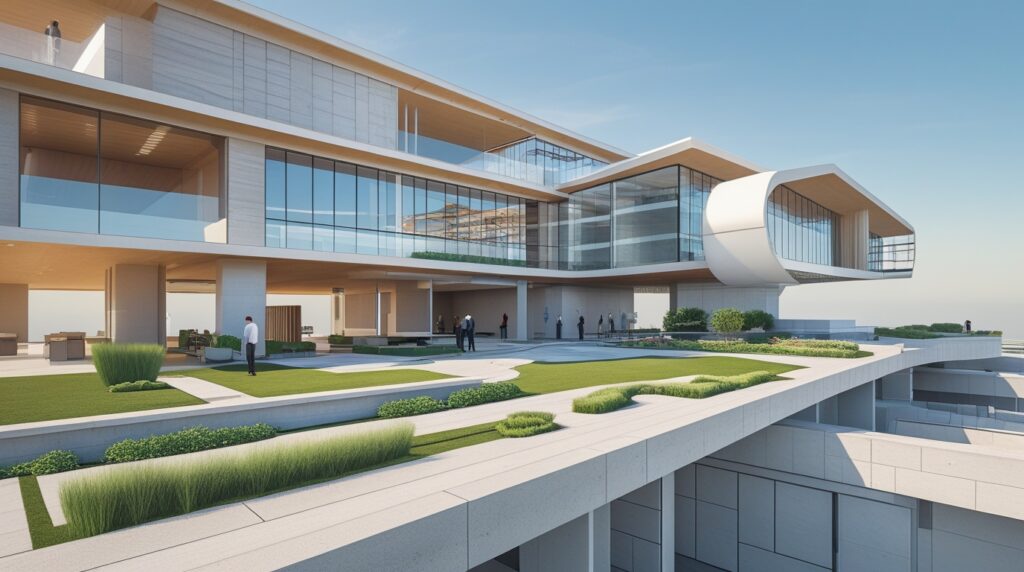The Architecture, Engineering, and Construction (AEC) industry is evolving rapidly. Traditional design tools like AutoCAD are giving way to advanced Building Information Modeling (BIM) platforms such as Autodesk Revit. Today, leading firms like Mettler Design are embracing Revit for AEC design because it enhances collaboration, streamlines workflows, and delivers unparalleled accuracy and visualization.
This transition is not just about software—it’s about innovation, integration, and smarter project delivery.
1. Unified 2D and 3D Design Capabilities
Unlike conventional CAD tools that separate 2D drafting and 3D modeling, Revit offers an integrated environment. Designers can model, draft, and visualize simultaneously, ensuring that every 2D change instantly updates the 3D model.
This dynamic link minimizes design errors and enhances visual communication with clients and stakeholders. For firms like Mettler Design, this means clearer project presentations and faster approvals.
2. Seamless Collaboration with Real-Time Work Sharing
In today’s connected world, collaboration is key. Revit’s BIM collaboration features allow multiple team members to work on a shared central model simultaneously. Whether architects, engineers, or MEP specialists, everyone can view and edit real-time updates—no matter their location.
This feature significantly improves efficiency, especially for complex, large-scale projects where teamwork and coordination are critical.
3. Parametric Modeling for Greater Flexibility

One of the most powerful aspects of Revit for AEC design is parametric modeling. This allows designers to establish intelligent relationships between building components. For instance, modifying a floor height automatically adjusts related elements such as walls, railings, and columns.
This flexibility reduces rework, maintains design intent, and accelerates project revisions—making Revit an indispensable tool for forward-thinking firms like Mettler Design.
4. Automated Scheduling and Improved Project Management
Revit simplifies project management through automated schedules. Material quantities, cost estimates, and timelines update automatically as the design evolves. This automation minimizes human error, saves time, and ensures precise documentation throughout the project lifecycle.
At Mettler Design, leveraging Revit’s automation ensures clients receive accurate projections and efficient project tracking, leading to smoother delivery and improved cost control.
5. BIM Integration and Interoperability

A key reason AEC companies prefer Revit is its BIM integration. Revit stores all design data in a centralized model, ensuring smooth coordination across all project stages—from concept to construction.
Moreover, Revit integrates effortlessly with tools like AutoCAD and Navisworks, allowing firms transitioning from traditional CAD systems to adapt without disruption. This interoperability supports a seamless digital transformation for AEC companies.
6. Supporting Sustainable and Energy-Efficient Designs
Sustainability is no longer optional—it’s essential. Revit incorporates energy analysis and environmental simulation tools, allowing architects and engineers to evaluate energy performance early in the design process.
By optimizing lighting, ventilation, and material selection, Mettler Design helps clients achieve eco-friendly, energy-efficient buildings that align with green certification requirements and sustainability goals.
7. Access to a Vibrant Support Ecosystem
Revit’s success is backed by a strong online community, including tutorials, user forums, and professional resources. This extensive ecosystem helps design teams resolve challenges quickly and continually refine their skills.
Mettler Design’s team stays at the forefront of innovation by engaging with this ecosystem—ensuring every project benefits from the latest advancements in BIM and design technology.
Why Revit Outperforms Traditional AutoCAD Design

While AutoCAD remains a powerful drafting tool, Revit surpasses it by offering intelligent BIM workflows, enhanced collaboration, and real-time data management.
Revit empowers AEC firms to integrate architecture, engineering, and construction disciplines into a single cohesive environment—boosting efficiency, accuracy, and design quality.
At Mettler Design, Revit has become a cornerstone of how we conceptualize, coordinate, and deliver projects that inspire innovation.
Partner with Mettler Design for Expert Revit and BIM Services
As leaders in AEC innovation, Mettler Design specializes in implementing Revit-based workflows that bring ideas to life with precision and creativity. Whether you’re transitioning from AutoCAD or optimizing your BIM processes, our team ensures a seamless, efficient, and future-ready design experience.
Contact Mettler Design today to discover how our Revit for AEC design solutions can transform your next project.

